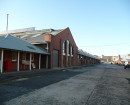NORFOLK ISLAND PINE AVENUES
CAMPBELL STREET AND ALBERT STREET AND REGENT STREET AND GIPPS STREET AND WILLIAM STREET AND JAMES STREET AND SACKVILLE STREET PORT FAIRY, MOYNE SHIRE
-
Add to tour
You must log in to do that.
-
Share
-
Shortlist place
You must log in to do that.
- Download report
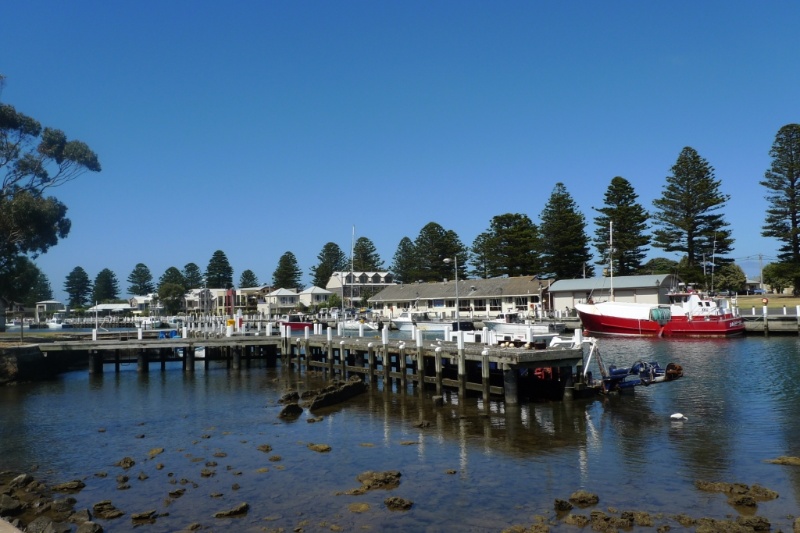

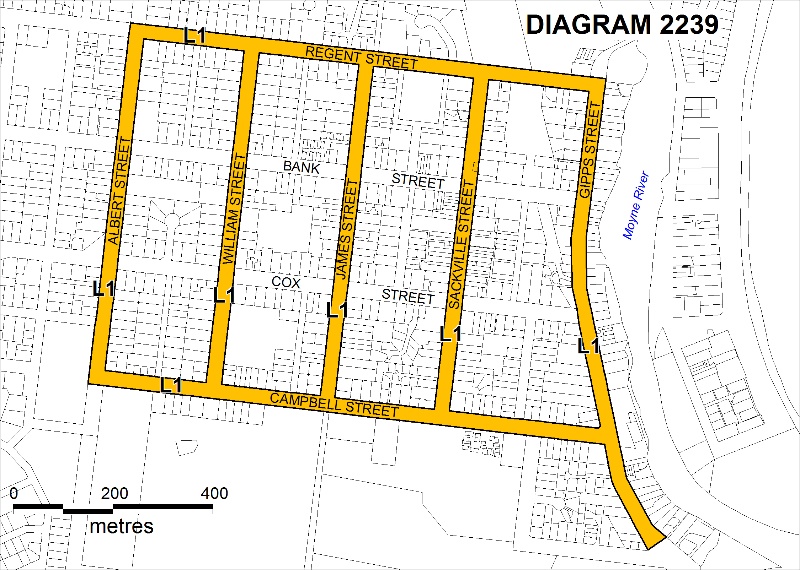
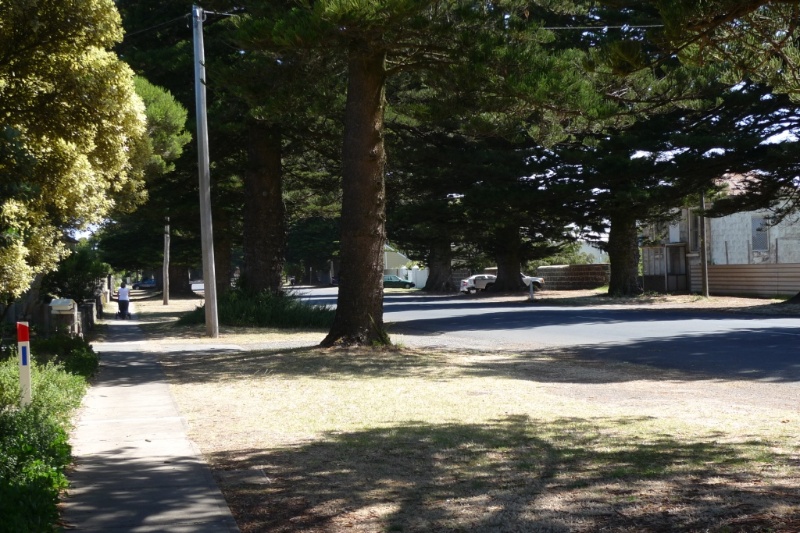
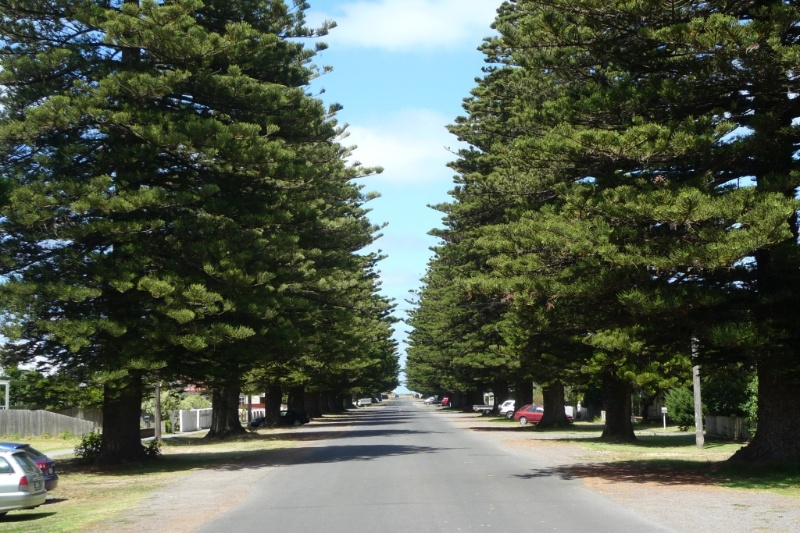
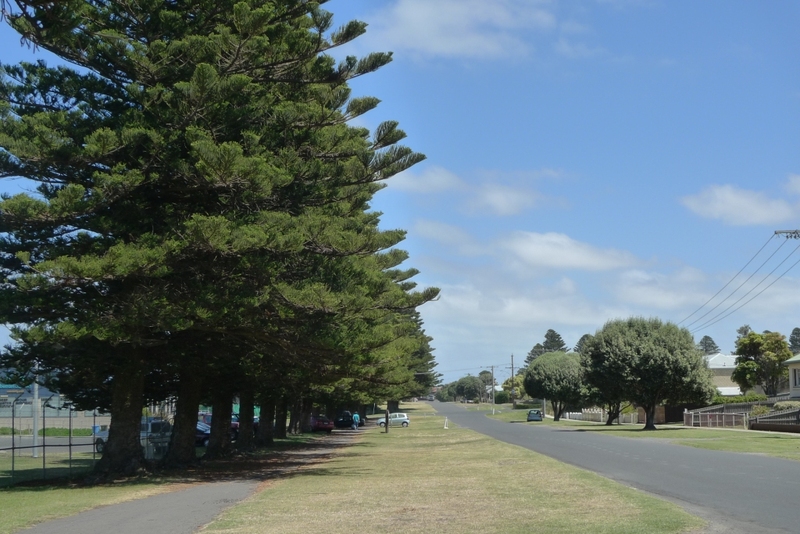
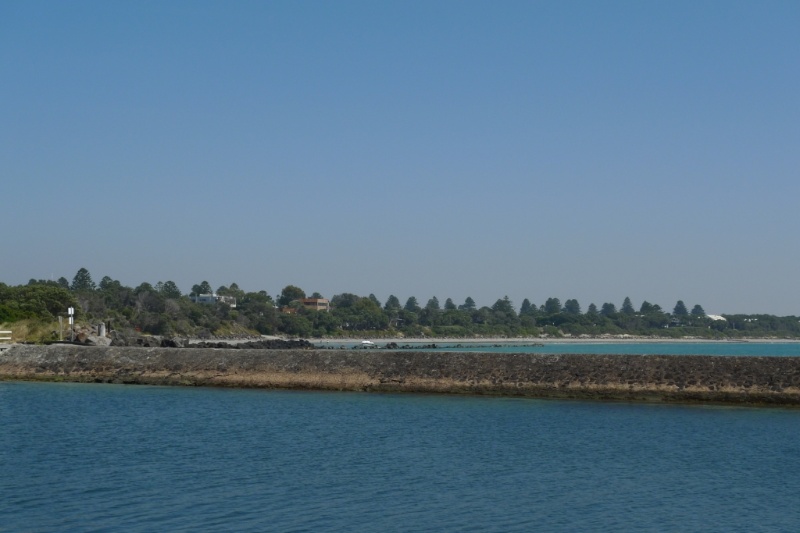
Statement of Significance
What is significant?
The street tree plantings of 269 Norfolk Island pines (Araucaria heterophylla) in the nature strips of road reserve bounded by Gipps Street to Victoria Street (87 trees), Campbell Street (36 trees), Albert Street (20 trees) and Regent Street (45 trees), including William Street (51 trees), James Street (5 trees) and Sackville Street (25 trees), define James Atkinson's 1843 town plan of Belfast, now Port Fairy.
The wide streets have gravel and grass verges to the property boundaries with few sealed crossovers and few sections of curb and channelling, although some nineteenth century basalt drains survive.
In 1843 James Atkinson purchased and surveyed 5,120 acres of land and laid out streets for a township which he named Belfast. By the 1860s much of the vegetation had been cleared for fuel and farming resulting in a bare landscape subject to strong westerly winds.
In 1852 Michael Connolly, a wealthy merchant, bought six Norfolk Island Pine seedlings from Norfolk Island, two of which are known to have been planted successfully in his garden. Characterised by tall, spreading canopies providing effective windbreaks and shade with a tolerance of coastal conditions, the success of these two trees most likely influenced other settlers to plant this species.
The first recorded public plantings of Norfolk Island Pines occurred in 1869 when the Presbyterian Church in William Street established an avenue of ten trees, of which four survive. By the 1870s there was a move by Borough Councillors to initiate the first street plantings in the wide streets and by 1874 the Borough Council had formed a sub committee to select the streets suitable for planting and a process for ensuring plants would survive grazing by itinerant cattle.
In 1876 Mayor Thomas Hutton presented 6 Norfolk Island Pines to the community which were planted in Sackville Street (south) on the western side. Another Councillor offered a matching half dozen for the eastern side in 1884. These gestures were followed by a number of citizens also planting trees, primarily Norfolk Island Pines, over the next decade. By the 1890s there was also an avenue of Norfolk Island Pines located in William Street and other plantings in Regent Street.
On 25 June 1903 the Borough Council organised a successful Arbour Day resulting in the community planting one hundred and nine trees including many Norfolk Island Pines in Gipps Street. School children were offered responsibility for a specific tree's development and care.
In the following years, further Norfolk Island Pines were planted in the streets with community sponsorship evident to support the continuing establishment of consistent street tree plantings. The area between Regent, Campbell, Albert and Gipps Streets represents approximately forty percent of the total number of Norfolk Island pines planted around Port Fairy on both public and private land.
All avenues are largely intact but some individual trees are missing while others have been replaced and are still juvenile. A few individual trees are in poor condition, have a poor form or are bifurcated, a natural tendency of Norfolk Island Pines. Some trees have been severely pruned to keep branches clear of cables and wiring.
How is it significant?
The Norfolk Island Pine avenues at Port Fairy are of historic, aesthetic and social significance to the state of Victoria.
Why is it significant?
The Norfolk Island Pine Avenues are of historical significance as one of the oldest surviving street plantings using a single species which mark the occupied boundaries of the township of Belfast. They are also amongst the earliest known Norfolk Island Pine plantings in Victoria after specimens planted in 1848 demonstrated their survival, effectiveness and appeal particularly for coastal conditions. Although no longer extant, Michael Connolly's two trees were most likely the earliest known plantings of Norfolk Island in Victoria, with other known specimens planted in the Melbourne Botanic Gardens (1857), the turning circle at Melbourne Grammar (1858), an avenue along the Moyne River in the Port Fairy Botanic Garden (1869), an avenue in front of the Presbyterian Church, William Street, Port Fairy (1869) and Churchill Island (1872). The selection of a native species as a street planting is of historical significance as from the 1870s, there was a preference for exotic deciduous species such as elms, oaks, poplars and plane trees. They are also of significance as the precursor to a theme of avenue planting that was widely adopted in Victoria.
The Norfolk Island Pine Avenues are of aesthetic significance as they provide strong form and a dramatic visual impact as the signature street tree planting at Port Fairy. The trees provide an important landscape feature visible throughout the town and also from surrounding areas.
The Norfolk Island Pines avenues are of social significance not only to the local community, but on a State level. The Pine Avenues are internationally recognisable as part of the Port Fairy 'brand'. The local use of the species by residents from 1848 and the wider community from 1873 demonstrates the conscious and cohesive investment of a small township in aesthetic improvement and protection from the strong westerly winds which has continued to form one of Victoria's signature street tree plantings.-
-
NORFOLK ISLAND PINE AVENUES - History
HISTORY:
CONTEXTUAL HISTORY
Taken from: Fashions in Street Tree Planting in Victoria, Roger Spencer, Landscape Australia 4/86 pp304 - 309
Brief History of Street Tree Planting in Victoria
The choice of trees planted as avenues in streets and parks during the nineteenth and early twentieth century falls into two fairly distinct periods. The first from 1850 to 1870 saw the planting of fast growing evergreens, mostly conifers, but also natives, including Blue Gums and Moreton Bay Figs. The second period from the 1880s saw a preference for the deciduous trees used in the streets of large European and American cities.
The Director of the Melbourne Botanic Gardens Ferdinand von Mueller, exerted a major influence on the selection of trees. Between 1857 -58 he developed a design in the Domain featuring avenue plantings of Silky Oak and Illawarra Flame trees and, by 1861 a double line of Blue Gums had been planted along St Kilda Road. Blue Gums were planted in Sturt Street Ballarat in 1858, however by the late 1880s they had deteriorated and were replaced with elms and oaks. Other tree species to gain popularity during the 1860s include the true Plane, the North American Wax Ash, and Pinus insignis [now Pinus radiata], and Monterey Pine.
In 1861 Daniel Bunce, Superintendent of the Geelong Botanic Gardens advocated the use of deciduous Wych elms, poplars, oaks, ashes, maples, gleditsias, robinias, planes and evergreen Blue Gums, Silver Wattle, Pinus radiata, Pseudotsuga menziesii, Picea abies and Norfolk Island Pines (Araucaria heterophylla).
By the late 1880s conifers and Blue Gums had lost favour as street trees. As early as 1869 an avenue of Blue Gums in Victoria Parade had been ringbarked and the deciduous trees widely used in major European cities were now recommended for street planting. The trees recommended were a range of elms, planes, oaks, and poplars. In cooler districts American and English Ash, Spanish Chestnut, Limes and Horse Chestnuts were planted. For northern districts, White Cedar, Silky Oak, Kurrajong, Tree-of-Heaven were selected. Joseph Firth, Superintendent of the Macedon State Nursery, noted in 1905 that deciduous trees were unsuitable for drier parts of Victoria and recommended Sugar Gum, Pepper Tree, Kurrajong, Silky Oak, Moreton Bay Fig, She-oak, Golden Wattle and Flame Tree. For milder climates Firth recommended the usual deciduous trees but also suggested limes, sycamores, maples, ash, alders, birch, beech and walnuts.
In 1910, A. Crooke wrote: Tree planting for the beautifying of cities and towns, in the Victorian Journal of the Department of Agriculture, and recommended the following trees; Eucalyptus ficifolia, [now Corymbia ficifolia], Prunus spp., Lagunaria patersonii, Jacaranda mimosifolia, Liriodendendron tulifera, Pittosporum undulatum and Tristania conferta [now Lophostemon confertus]. For hot northern areas such as Kerang and Swan Hill, Schinus molle [now Schinus areira], was well established as a rapid grower, and for general planting the Kurrajong and Silky Oak
HISTORY OF PLACE
This section is largely based on:
Michael Connolly's Legacy: A brief history of the street and specimen trees in Belfast/Port Fairy 1846-2006 by Marten Syme, National Trust Port Fairy Branch, 2006.
Other references:
Port Fairy Botanic Gardens Conservation Plan by H Doyle, R Aitken and P Jellie, 1999.
The beginnings of the township of Port Fairy appeared in 1843 with the purchase and survey of 5120 acres of land by Irish solicitor, James Atkinson who laid out streets for a township which he named Belfast and sub-divided the surrounding area into small allotments leased to tenant farmers
The fertility of the hinterland made cropping viable, particularly grain and vegetables. Small-scale farming was further encouraged from 1847 with the sale of 640 acre allotments. Despite the constraints on development posed by Atkinson's special survey, the township prospered attracting immigrants particularly from Ireland and Scotland. By 1851 when Victorian separated from NSW, Belfast was the third largest town in the colony outside Melbourne, after Geelong and Portland.
There is evidence that the first Norfolk Island Pines at Port Fairy were planted for Michael Connolly on private property by 1852. Michael Connolly was a member of Port Phillip Syndicate (with Batman) and a Launceston merchant/financier. He was a partner with Griffiths in whaling enterprises, and was (apparently) at Port Fairy c.1844 and died in 1855 and is buried (with a marble tombstone) in the sandhills cemetery to the west of Port Fairy. He was a founding partner of the Tamar Bank in 1835.
This was supported by a contemporary order for purchase of Norfolk Island Pines in Sydney by Connolly. Unfortunately, neither of the two known plantings by Connolly survive, being removed for the railway easement to the Moyne wharf (c.1889) or by the later property owner, who effectively killed the surviving example (c.1961). Based on other known early plantings with other known specimens planted in the Melbourne Botanic Gardens (1857), the turning circle at Melbourne Grammar (1858), an avenue along the Moyne River in the Port Fairy Botanic Garden (1869) and Churchill Island (1872, it appears that Connolly's plantings were the first for this species in Victoria.
The natural flora around Port Fairy was quickly cleared by small tenant farmers and cut for fuel for flour mill boilers. Photographs of the 1860s indicate a largely cleared and bare landscape, despite the presence of strong and persistent westerly winds, which, with wandering stock, made tree regeneration difficult. The obvious success of the Norfolk Island Pines in Connolly's garden was probably the significant factor in others recognizing the advantage of planting such tall, spreading canopy trees, which were adapted to coastal conditions. Dr. Mueller, Director of the Melbourne Botanic Gardens, supplied specimens for the Belfast Botanic Gardens, (eventually over 100 specimens) and the trustees of the Presbyterian Church planted an avenue of 10 trees leading to the church (VHR H0850) in 1869, of which four survive.
In June 1871, the municipality requested 100 Norfolk Island Pines from Daniel Bunce, who due to lack of stock, was unable to meet the request until September. The Norfolk Island Pines along the river in the botanic gardens were extended although it seemed that no street plantings had been considered at this time.
Borough of Belfast councillors were cognizant of a need to plant the wide streets of the town to enhance the surrounds and provide wind protection and shade. There was no noted preference for planting Norfolk Island pines (it appeared to be the self-evident species choice, given the success of earlier plantings), and a sub-committee was formed to select the streets suitable for planting and a process for ensuring plants would survive the grazing by itinerant cattle. In 1876, the Mayor (Cr. T.Hutton) presented 6 Norfolk Island Pines to the community, which was planted in Sackville Street (south) on the western side. Another councillor offered a matching half dozen for the eastern side in 1884. These gestures were followed by a number of citizens also planting trees, primarily Norfolk Island Pines, over the next decade.
It is not clear from remaining records, but it appears that an avenue of Norfolk Island pines was located in William Street by the 1890s. Dr Mueller's death in 1896, leading to the formation of the Baron von Mueller Testimonial Committee in Port Fairy, provoked a definitive move with remaining monies being used for numerous street plantings in Regent Street and Rosebrook Road.
Local gardener, William Fry, offered to erect tree guards and maintain the new plantings, which led to the Borough Council proposing an "Arbour day" for extensive street planting of Norfolk Island pines in 1903. This was a major event in the town involving school children, councillors and the community. Groups and individuals donated trees for street enhancement and 109 predominantly Norfolk Island Pines were planted mainly in Gipps Street, with school children offered responsibility for a specific tree's development and care.
In the following years, further Norfolk Island Pines were planted in the streets, with community sponsorship evident to support the continuing establishment of street plantings. Norfolk Island Pines were progressively planted outside the "old Belfast" town boundary at Martin's Point, Griffith Island, Griffiths St and on the Hamilton Road. In recent years, further plantings have occurred in Regent St, Railway Place and the Portland Road.
NORFOLK ISLAND PINE AVENUES - Plaque Citation
DESCRIPTION:
The street tree plantings of 276 Norfolk Island pines (Araucaria heterophylla) in the nature strips of the road reserve bounded by Gipps Street to Victoria Street, Campbell Street, Albert Street and Regent Street, including William Street, James Street and Sackville Street, mark James Atkinson's original town plan of Belfast, now Port Fairy. The wide streets have gravel and grass verges to the property boundaries with few sealed crossovers and few sections of curb and channelling although some nineteenth century basalt drains survive. Some streets have a concrete footpath on one or both sides of the road reserve. The plantings demonstrate a strong community investment in aesthetic improvement and weather protection, and have been expanded to form one of Victoria's "signature" street plantings. The lack of suburban infrastructure is an important component of the character of the streetscapes.
Norfolk Island Pines were progressively planted outside the old Belfast town boundary at Martin's Point, Griffith Island, Griffiths Street and on the Hamilton Road and continue to be a feature of the Botanic Gardens. In recent years, further plantings have occurred in Regent Street, Railway Place and the Portland Road.
The trees within the nominated area are on the road reserves managed by Moyne Shire, and represent just over 40% of the total number of Norfolk Island pines planted around Port Fairy on both public and private land.
All avenues are largely intact but some individual trees are missing while others have been replaced and are still juvenile. A few individual trees are in poor condition, have a poor form or are bifurcated, a natural tendency of Norfolk Island Pines. Some trees have been severely pruned to keep branches clear of cables and wiring.
First planted in the town in 1852, and used as street trees from 1873, the pines are the oldest surviving street tree plantings in Victoria of a single native species.
NORFOLK ISLAND PINE AVENUES - Assessment Against Criteria
ASSESSMENT AGAINST CRITERIA
a. Importance to the course, or pattern, of Victoria's cultural history
The conscious selection of Norfolk Island Pines by individuals and the community as a suitable species for avenue and row plantings along the boundaries and north-south streets of the early township of Belfast (later Port Fairy) was the precursor to a theme of avenues widely adopted by councils, particularly in regional Victoria. The development from the 1870s of a vegetative town boundary in the cleared landscape reflected an early community's desire to improve aesthetics and provide a windbreak and shade. The Norfolk Island Pine Avenues are of historical significance as one of the oldest surviving street plantings using a single native species. The tradition continues with replacement plantings for missing trees.
b. Possession of uncommon, rare or endangered aspects of Victoria's cultural history.
c. Potential to yield information that will contribute to an understanding of Victoria's cultural history.
d. Importance in demonstrating the principal characteristics of a class of cultural places or environments.
e. Importance in exhibiting particular aesthetic characteristics.
The Norfolk Island Pine Avenues are of aesthetic significance as they provide strong form and a dramatic visual impact as the signature street tree planting at Port Fairy. The trees provide an important landscape feature visible throughout the town and also from surrounding areas
f. Importance in demonstrating a high degree of creative or technical achievement at a particular period.
g. Strong or special association with a particular community or cultural group for social, cultural or spiritual reasons. This includes the significance of a place to Indigenous peoples as part of their continuing and developing cultural traditions.
The Norfolk Island Pines avenues are of social significance not only to the local community, but on a State level. The Pine Avenues are internationally recognisable as part of the Port Fairy 'brand'. The local use of the species by residents from 1848 and the wider community from 1873 demonstrates the conscious and cohesive investment of a small township in aesthetic improvement and protection from the strong westerly winds which has continued to form one of Victoria's signature street tree plantings.
h. Special association with the life or works of a person, or group of persons, of importance in Victoria's history.
NORFOLK ISLAND PINE AVENUES - Permit Exemptions
General Exemptions:General exemptions apply to all places and objects included in the Victorian Heritage Register (VHR). General exemptions have been designed to allow everyday activities, maintenance and changes to your property, which don’t harm its cultural heritage significance, to proceed without the need to obtain approvals under the Heritage Act 2017.Places of worship: In some circumstances, you can alter a place of worship to accommodate religious practices without a permit, but you must notify the Executive Director of Heritage Victoria before you start the works or activities at least 20 business days before the works or activities are to commence.Subdivision/consolidation: Permit exemptions exist for some subdivisions and consolidations. If the subdivision or consolidation is in accordance with a planning permit granted under Part 4 of the Planning and Environment Act 1987 and the application for the planning permit was referred to the Executive Director of Heritage Victoria as a determining referral authority, a permit is not required.Specific exemptions may also apply to your registered place or object. If applicable, these are listed below. Specific exemptions are tailored to the conservation and management needs of an individual registered place or object and set out works and activities that are exempt from the requirements of a permit. Specific exemptions prevail if they conflict with general exemptions. Find out more about heritage permit exemptions here.Specific Exemptions:General Conditions: 1. All exempted alterations are to be planned and carried out in a manner which prevents damage to the fabric of the registered place or object.
General Conditions: 2. Should it become apparent during further inspection or the carrying out of works that original or previously hidden or inaccessible details of the place or object are revealed which relate to the significance of the place or object, then the exemption covering such works shall cease and Heritage Victoria shall be notified as soon as possible.
General Conditions: 3. If there is a conservation policy and plan endorsed by the Executive Director, all works shall be in accordance with it. Note: The existence of a Conservation Management Plan or a Heritage Action Plan endorsed by the Executive Director, Heritage Victoria provides guidance for the management of the heritage values associated with the site. It may not be necessary to obtain a heritage permit for certain works specified in the management plan.
General Conditions: 4. Nothing in this determination prevents the Executive Director from amending or rescinding all or any of the permit exemptions.
General Conditions: 5. Nothing in this determination exempts owners or their agents from the responsibility to seek relevant planning or building permits from the responsible authorities where applicable.
Minor Works : Note: Any Minor Works that in the opinion of the Executive Director will not adversely affect the heritage significance of the place may be exempt from the permit requirements of the Heritage Act. A person proposing to undertake minor works shall submit a proposal to the Executive Director. If the Executive Director is satisfied that the proposed works will not adversely affect the heritage values of the site, the applicant may be exempted from the requirement to obtain a heritage permit. If an applicant is uncertain whether a heritage permit is required, it is recommended that the permits co-ordinator be contacted.
Landscape:
The following categories of works are exempt from permit:
Management and maintenance of trees including formative and remedial pruning, removal of deadwood, pest and disease control, cabling, mowing, weed control and mulching.
In the event of loss or removal of trees, replanting with Norfolk Island Pines (Araucaria heterophylla) to maintain the landscape character identified in the statement of significance. Removal of tree seedlings and suckers but excluding herbicide use.
Management of trees in accordance with Australian Standard: Pruning of amenity trees AS 4373.
Management of trees in accordance with Australian Standard: Protection of trees on development sites AS 4970.
Removal of plants listed as Prohibited and Controlled Weeds in the Catchment and Land Protection Act 1994.
Repairs, conservation and maintenance to structures and hard landscape elements, asphalt and gravel roads and paths, stone and concrete edging, fences and gates.
NORFOLK ISLAND PINE AVENUES - Permit Exemption Policy
PERMIT POLICY
The purpose of the exemptions is to allow works that do not affect the cultural heritage significance of the place.
All works should ensure the protection of the trees and the aesthetic value of the avenue street plantings. Parking within the root zone of the trees should be discouraged.
Buildings and works associated with water, gas, power, sewer, drainage or similar services that occur within the road reserve will require an arborist report and the approval of the Executive Director of Heritage Victoria.
Repairs to the asphalt road surface are exempt from a permit, however any excavation works, new vehicle crossovers and driveways within the road reserve will require an arborist report and the approval of the Executive Director of Heritage Victoria.
The Moyne Shire Council is encouraged to prepare a Tree Management Plan.
-
-
-
-
-
EMOH
 Victorian Heritage Register H0252
Victorian Heritage Register H0252 -
FORMER ST ANDREWS PRESBYTERIAN CHURCH AND MANSE
 Victorian Heritage Register H0850
Victorian Heritage Register H0850 -
GUNS AND EMPLACEMENTS
 Victorian Heritage Register H1504
Victorian Heritage Register H1504
-
177 Fenwick Street
 Yarra City
Yarra City -
19 Cambridge Street
 Yarra City
Yarra City -
2 Derby Street
 Yarra City
Yarra City
-
-









